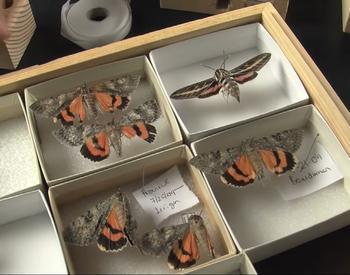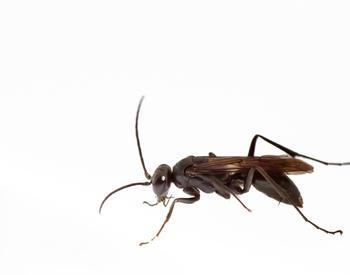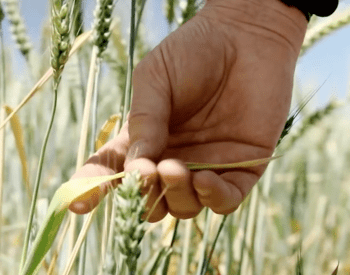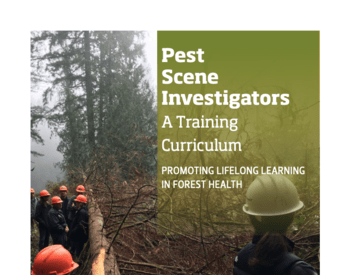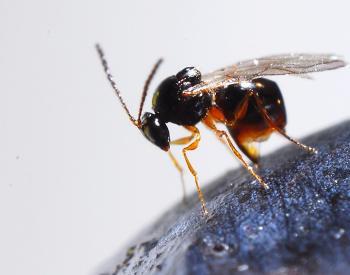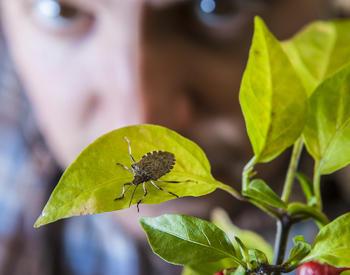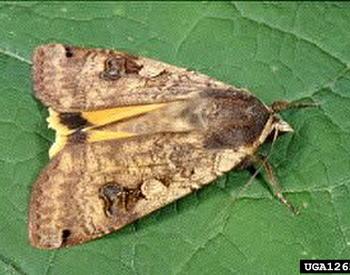After you have collected an insect or arthropod, you will want to preserve it. The methods and materials used depend on the type of insect and the purpose and size of the collection. The keys to long-term success in a collection are attention to detail and organization, while selecting the proper method of preservation.
Insects and mites of all kinds may be killed and preserved in liquid agents or a dry gaseous agent. Some kinds of insects are best kept dry.
Ethanol (grain or ethyl alcohol) mixed with water (70% to 80% alcohol) is usually the best general killing and preserving agent. For some kinds of insects and mites, other preservatives or higher or lower concentrations of alcohol may be better. Because pure ethanol is often difficult to obtain, some collectors use isopropanol, or isopropyl alcohol. Isopropanol does not seem to harden specimens as much as ethanol. The specific concentration to use depends on the kind of insect or mite to be preserved. Some examples:
- Parasitic hymenoptera (tiny wasps) are best killed and preserved in 95% alcohol. This high concentration prevents the membranous wings from becoming twisted and folded, keeps hairs from matting, and keeps soft body parts from shriveling.
- Soft- bodied insects (aphids, thrips, small flies, and mites) become stiff and distorted if preserved in 95% alcohol and should be preserved in alcohol of a lower concentration.
- Adult bees should not be collected in alcohol because their abundant body hairs become badly matted.
- Adult moths, butterflies, mosquitoes, moth flies, and other groups with scales and long, fine hairs on the wings or body may be worthless if collected in alcohol, regardless of the concentration.
Formalin (formaldehyde) solutions should NOT be used because the tissues become excessively hardened and the specimens then become difficult to handle.
Special care for caterpillars/larvae and others
Larvae of most insects should be collected, boiled in water to "fix" their proteins and prevent them from turning black, and placed in alcohol. Larvae should be left in hot water for 1–5 minutes, depending on the size of the specimens, and then transferred to 70% to 80% alcohol. Thrips and most mites are best collected in an alcohol-glycerin-acetic acid.
How long can you preserve insects and allies?
Larvae and most soft-bodied adult insects and mites can be kept almost indefinitely in liquid preservatives; however, for a permanent collection, mites, aphids, thrips, whiteflies, fleas, and lice usually are mounted on microscope slides. Larvae are usually kept permanently in alcohol, but some may be mounted by the freeze-drying technique or by inflation.
Many insects collected in alcohol are later pinned for placement in a permanent collection. Hard-bodied insects such as beetles can be pinned directly after removing them from alcohol, but for softer insects, such as flies and wasps, special procedures must be followed.
Temporary storage of specimens
After specimens have been collected, there are several ways to keep them in good condition until they can be prepared properly. The method used depends largely on the length of time that the specimens may have to be stored temporarily.
Refrigeration and freezing
Medium to large specimens may be left in tightly closed bottles for several days in a refrigerator and remain in good condition for pinning, as will smaller specimens if left overnight.
Some moisture must be present in the containers so that the specimens do not become "freeze-dried." But if there is too much moisture, it will condense on the inside of the bottle as soon as it becomes chilled. Place absorbent paper between the jar and the insects to keep them dry. When removing specimens for further treatment, place them immediately on absorbent paper to prevent moisture from condensing on them.
Alcohol
Insects may be placed in alcohol and kept for several years before they are pinned or otherwise treated. However, it has been shown that many insects, especially small ones, can deteriorate in alcohol stored at room temperature. Store these specimens in a freezer for the long term. Even though the alcohol will not freeze at the temperatures obtained by most freezers, the lower temperature seems to slow or stop deterioration.
Dry preservation
It is standard practice to place many kinds of insects in small boxes, paper tubes, triangles, or envelopes for an indefinite period, allowing them to become dry. However, soft-bodied insects stored by such methods can shrivel and break. Diptera should never be dried in this manner because the head, legs, and most of all the antennae detach easily.
Almost any kind of container may be used for dry storage; however, tightly closed, impervious containers of metal, glass, or plastic should be avoided because mold may develop on specimens if even a small amount of moisture is entrapped. Nothing can be done to restore a moldy specimen.
Always label specimens with complete collection data in or on each container. Organization is the key! Labels should contain:
- Locality
- Date
- Collector
- Any other data
'Papering' or storage method
Although it's preferable to pin specimens when they are fresh, the storage method known as papering has long been used successfully for larger specimens of Lepidoptera, Trichoptera, Neuroptera, Odonata, and some other groups.
Papering consists of placing specimens with the wings folded together dorsally (upper sides together) in folded triangles or in small rectangular envelopes of glassine paper, which are the translucent envelopes familiar to stamp collectors.
It is a traditional way of storing unmounted butterflies and is satisfactory for some moths — although the relatively soft bodies of moths will often be flattened, their legs or palpi broken, and the vestiture of the body partly rubbed off. To save space in most large collections, file Odonata permanently in clear plastic envelopes instead of pinning them.
Preservation for molecular studies
Systematists are increasingly using molecular methods to study insects. Some of these techniques, such as the study of cuticular hydrocarbons, can be used on dried insects, even those stored in museum collections. However, many others require that specimens be treated so that DNA or other molecules are preserved.
In general, specimens for molecular work should be collected in 95% or absolute (100%) ethanol (ethyl alcohol). Thoroughly dehydrate specimens by changing the alcohol at least a couple of times before storing them for any length of time. It is also advisable to keep specimens cold or, if possible, frozen.
More information
